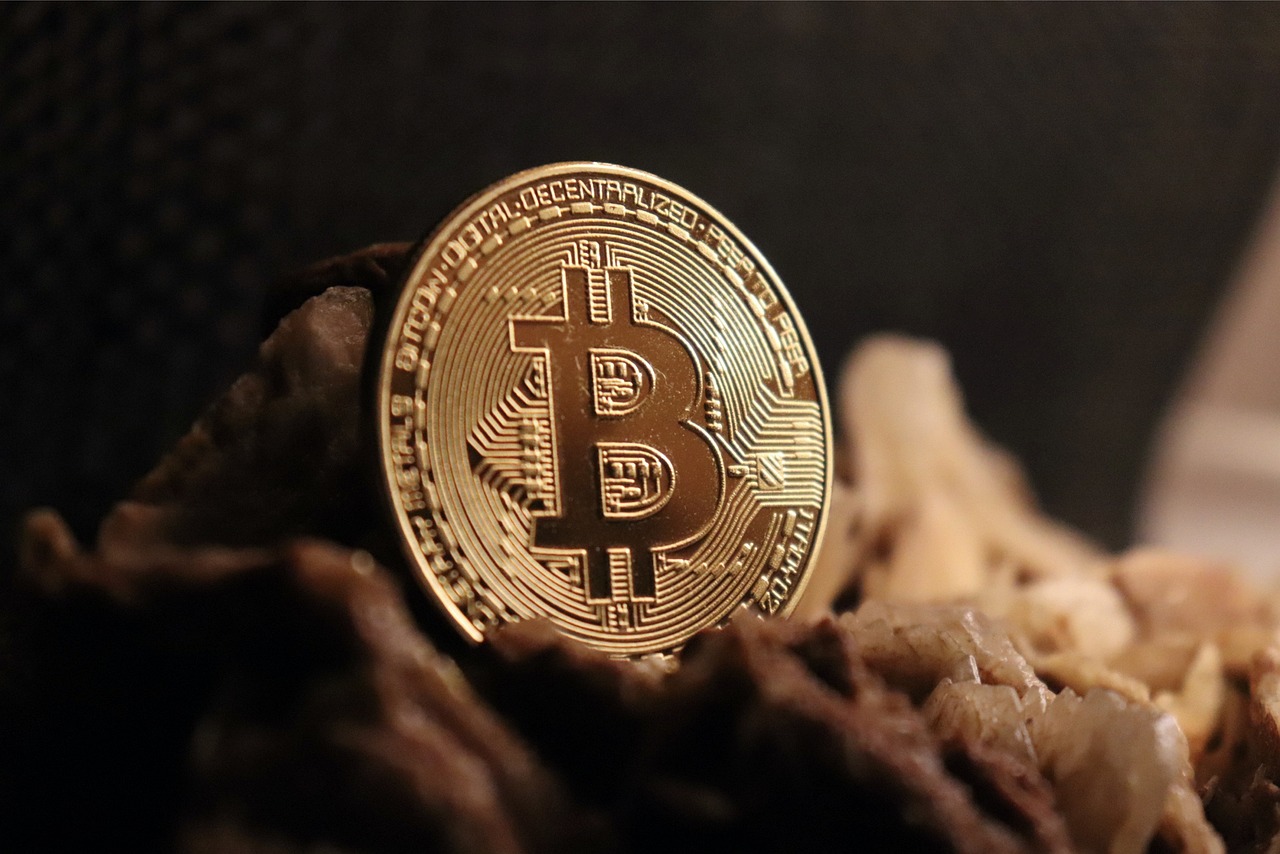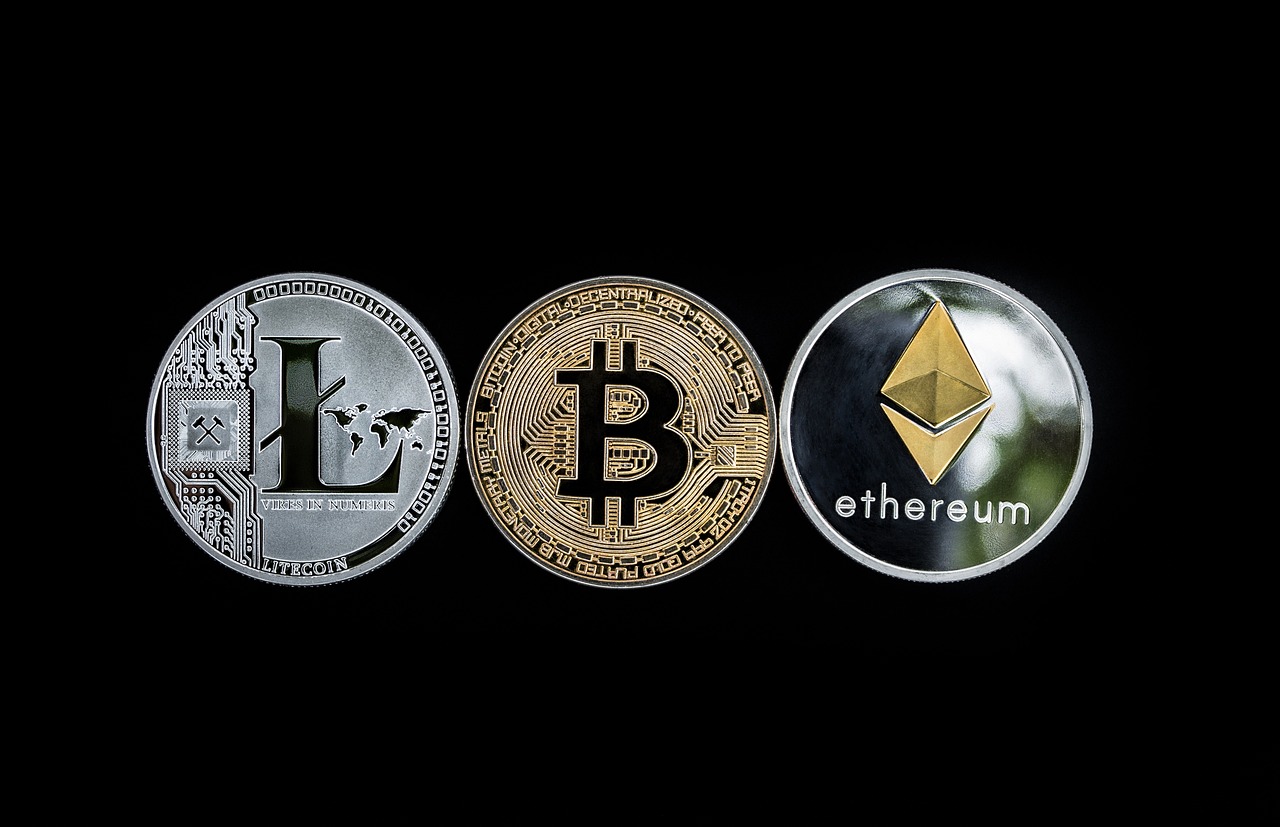Understanding the Influence of Crypto Adoption on Prices
The world of cryptocurrencies is like a roller coaster ride—thrilling, unpredictable, and full of surprises. As more people jump on board this digital currency train, the question arises: how does this growing adoption influence the prices of cryptocurrencies? The relationship between crypto adoption and market prices is complex and multifaceted, influenced by various factors that can either propel prices to new heights or cause them to plummet. In this article, we will explore the intricate dynamics of crypto adoption, the role of market sentiment, technological advancements, regulatory environments, and investor behavior, all while keeping our eyes on the ultimate prize: understanding how these elements intertwine to shape the financial landscape.
Market sentiment is like the pulse of the cryptocurrency world. It reflects the collective emotions and attitudes of investors, and just like in any market, these feelings can lead to significant price fluctuations. When investors are optimistic, prices tend to rise; conversely, when fear grips the market, prices can take a nosedive. This emotional roller coaster can be triggered by various events, including regulatory news, technological breakthroughs, or even social media trends. For instance, a single tweet from a prominent figure can send the prices soaring or crashing in a matter of minutes. Understanding market sentiment is crucial for anyone looking to navigate the turbulent waters of crypto investing.
Technological innovations in the blockchain and cryptocurrency space are game-changers. They not only enhance the usability of cryptocurrencies but also significantly impact their adoption rates. As technology evolves, so do the functionalities and applications of cryptocurrencies, making them more accessible to the average person. This increased usability often leads to a surge in interest and investment, which in turn can drive prices higher. For example, the introduction of faster transaction speeds or lower fees can attract more users to a particular cryptocurrency, creating a ripple effect on its market value.
One of the most exciting advancements in the crypto world is the emergence of smart contracts. These self-executing contracts with the terms of the agreement directly written into code automate transactions, reducing the need for intermediaries. This not only enhances security but also boosts efficiency, making cryptocurrencies more appealing to businesses and individuals alike. The more people recognize the benefits of smart contracts, the more likely they are to adopt cryptocurrencies, which can lead to an uptick in prices.
Decentralized Finance, or DeFi, is another revolutionary aspect of the cryptocurrency ecosystem. By providing decentralized services such as lending, borrowing, and trading without traditional intermediaries, DeFi platforms are democratizing finance. As more users engage with these platforms, the demand for cryptocurrencies used within these ecosystems increases, creating upward pressure on prices. The rise of DeFi is not just a trend; it's a fundamental shift in how we view finance, and its influence on crypto adoption cannot be overstated.
Interoperability among different blockchain networks is essential for fostering a more inclusive crypto environment. When various blockchains can communicate and interact seamlessly, it enhances user accessibility and broadens the potential user base for cryptocurrencies. This increased accessibility can lead to higher adoption rates, positively impacting market prices. As developers work on improving interoperability solutions, we can expect to see a more interconnected crypto ecosystem that benefits everyone involved.
The regulatory landscape surrounding cryptocurrencies is continually evolving, and it plays a pivotal role in shaping market dynamics. Regulations can either act as a catalyst for adoption or serve as a barrier. For instance, clear and favorable regulations can instill confidence in investors, leading to increased adoption and higher prices. Conversely, stringent regulations can stifle innovation and deter potential users. As we move forward, the balance between regulation and innovation will be crucial in determining the future of cryptocurrency prices.
Understanding investor behavior is key to analyzing price movements in the crypto market. Different types of investors—retail and institutional—bring their own motivations and strategies, which can significantly influence market dynamics. Retail investors often react impulsively to market news, while institutional investors tend to take a more measured approach. This divergence in behavior can lead to contrasting effects on prices, making it essential to consider the broader investor landscape when analyzing market trends.
The distinction between retail and institutional investors is vital in understanding market fluctuations. Retail investors, driven by emotions and trends, can cause rapid price changes, whereas institutional investors often provide stability through larger, more calculated investments. As institutional interest in cryptocurrencies grows, we may see a shift in market dynamics, with more stable prices and increased legitimacy for the crypto space.
Finally, the holding strategies of investors can significantly affect price stability. Long-term holders, often referred to as "HODLers," contribute to price stability by reducing the supply of available coins in the market. In contrast, short-term traders may create volatility through frequent buying and selling. Understanding these holding patterns can provide valuable insights into potential price movements and market behavior.
- What factors influence cryptocurrency prices?
Cryptocurrency prices are influenced by market sentiment, technological advancements, regulatory changes, and investor behavior.
- How does market sentiment affect crypto prices?
Positive market sentiment can drive prices up, while negative sentiment can lead to declines.
- What are smart contracts?
Smart contracts are self-executing contracts with the terms directly written into code, enhancing security and efficiency.
- What is DeFi?
Decentralized Finance (DeFi) refers to financial services that operate without traditional intermediaries, increasing accessibility to cryptocurrencies.

The Role of Market Sentiment
Market sentiment is like the heartbeat of the cryptocurrency world; it pulses with the emotions and perceptions of investors. When people feel optimistic about the future of cryptocurrencies, prices tend to rise, and conversely, a wave of pessimism can lead to significant drops. This phenomenon isn’t just a quirky aspect of trading; it’s a fundamental driver of price fluctuations. Imagine walking into a bustling marketplace where everyone is excited about the latest tech gadget. The buzz creates a sense of urgency and desire, pushing prices higher. Similarly, in the crypto market, positive news, such as mainstream adoption or technological breakthroughs, can create a euphoric atmosphere, leading to soaring prices.
On the flip side, negative news can trigger a panic sell-off. Think about a rumor spreading through a tight-knit community; it can cause members to act irrationally, often leading to a stampede. In the crypto space, events like regulatory crackdowns, security breaches, or even celebrity tweets can drastically shift sentiment overnight. For instance, when a well-known figure expresses doubt about a cryptocurrency, it can send shockwaves through the market, causing prices to plummet as investors rush to protect their assets.
Understanding market sentiment is crucial for investors. It’s not just about numbers and charts; it’s about the psychology behind those movements. Investors often rely on sentiment indicators, which are tools designed to gauge the overall mood of the market. These indicators can include:
- Fear and Greed Index: This tool measures the emotions driving the market, helping investors understand whether the market is in a state of fear or greed.
- Social Media Trends: Monitoring platforms like Twitter and Reddit can provide insights into what the community is buzzing about, which often precedes price movements.
- Market Volume: High trading volumes can indicate strong sentiment in one direction, whether bullish or bearish.
Investors often find themselves oscillating between fear and greed, which can create volatility. This emotional rollercoaster is why many traders emphasize the importance of a sound strategy that includes risk management. By analyzing market sentiment, investors can make informed decisions that align with their financial goals.
In conclusion, market sentiment is a powerful force in the cryptocurrency landscape. It shapes price movements, influences investor behavior, and ultimately determines the success or failure of various cryptocurrencies. By staying attuned to the emotional currents of the market, investors can navigate the often-turbulent waters of crypto trading more effectively.

Technological Advancements
The landscape of cryptocurrency is constantly evolving, largely driven by that enhance usability and functionality. These innovations are not just buzzwords; they represent the backbone of increased adoption and, consequently, price movements in the crypto market. Imagine the excitement of a new gadget that makes your life easier; this is what technological progress does for cryptocurrencies. It opens doors to new possibilities, making them more appealing to a broader audience.
One of the most significant advancements in recent years has been the development of smart contracts. These self-executing contracts with the terms of the agreement directly written into code have revolutionized the way transactions are conducted. They eliminate the need for intermediaries, reducing costs and enhancing security. The more people see the value in using smart contracts, the more they will adopt cryptocurrencies, which can lead to an increase in prices. For instance, if a new platform launches that utilizes smart contracts for real estate transactions, it could spark a wave of interest in cryptocurrencies as a means of facilitating such deals.
Smart contracts are not just a technical innovation; they represent a fundamental shift in how we think about agreements. They operate on blockchain technology, ensuring that once a contract is executed, it cannot be altered or tampered with. This level of security is appealing not just to individuals but also to businesses looking to streamline operations. As more companies adopt smart contracts, the demand for cryptocurrencies used in these transactions will likely increase, leading to price appreciation.
Another significant technological advancement is the rise of Decentralized Finance (DeFi). DeFi platforms are democratizing financial services by providing decentralized alternatives to traditional banking. This means that anyone with an internet connection can access lending, borrowing, and trading services without needing a bank. The allure of DeFi lies in its accessibility and the potential for higher yields compared to traditional financial products. As more users flock to DeFi platforms, the demand for cryptocurrencies used within these ecosystems will surge, potentially driving up prices.
Interoperability is another critical area of technological advancement. It refers to the ability of different blockchain networks to communicate and interact with one another. Think of it as the universal translator for cryptocurrencies. Improved interoperability solutions allow users to move assets seamlessly across various platforms, increasing accessibility and usability. When users find it easier to switch between different cryptocurrencies and platforms, they are more likely to engage with the crypto market, leading to greater adoption and price stability.
In summary, technological advancements in the cryptocurrency space are not just enhancing the functionality of digital currencies; they are paving the way for a more inclusive financial system. As smart contracts, DeFi, and interoperability solutions become more mainstream, we can expect to see a ripple effect that impacts adoption rates and, ultimately, market prices. The future of crypto is bright, and it's fueled by innovation.
- What are smart contracts? Smart contracts are self-executing contracts with the terms directly written into code, operating on blockchain technology.
- How does DeFi influence cryptocurrency prices? DeFi platforms provide decentralized financial services, increasing demand for cryptocurrencies used within these services, which can drive up prices.
- What is interoperability in blockchain? Interoperability refers to the ability of different blockchain networks to communicate and interact, enhancing user accessibility and engagement.

Smart Contracts
Smart contracts are one of the most exciting innovations in the blockchain space, acting as self-executing contracts with the terms of the agreement directly written into code. Imagine a vending machine: you insert money, select your item, and the machine delivers it without any human intervention. In a similar vein, smart contracts automate transactions, removing the need for intermediaries and reducing the risk of fraud. This automation not only enhances security but also increases the efficiency of transactions, making them faster and cheaper. With the rise of smart contracts, we are witnessing a transformation in how agreements are made and executed across various industries.
The impact of smart contracts on cryptocurrency adoption cannot be overstated. As more developers create decentralized applications (dApps) utilizing smart contracts, the usability of cryptocurrencies increases, attracting a wider audience. For instance, platforms like Ethereum have become popular due to their robust smart contract capabilities, allowing developers to build a plethora of applications ranging from games to financial services. This increased usability leads to greater demand for the underlying cryptocurrency, often resulting in price appreciation.
To illustrate the potential of smart contracts, consider the following table that highlights some key benefits and their implications for the market:
| Benefit | Description | Market Implication |
|---|---|---|
| Automation | Eliminates manual processes and reduces human error. | Increases trust and reliability, driving more users to adopt cryptocurrencies. |
| Cost Efficiency | Reduces transaction fees by cutting out intermediaries. | Encourages more transactions, boosting overall market activity. |
| Transparency | All transactions are recorded on the blockchain, accessible to all parties. | Enhances confidence in the system, attracting more investors. |
However, it's essential to recognize that the adoption of smart contracts is not without challenges. Issues such as coding errors, legal recognition, and scalability can pose significant hurdles. For example, a bug in a smart contract can lead to substantial financial losses, as seen in several high-profile hacks. Moreover, while the idea of self-executing contracts is revolutionary, the legal system has yet to fully catch up with this technology, leaving many questions unanswered about enforcement and dispute resolution.
Despite these challenges, the potential for smart contracts to revolutionize industries such as finance, real estate, and supply chain management is immense. As the technology matures and more users become aware of its benefits, we can expect a significant impact on cryptocurrency adoption and, consequently, market prices. The future is bright for smart contracts, and their evolution will likely play a pivotal role in shaping the cryptocurrency landscape.

Decentralized Finance (DeFi)
Decentralized Finance, commonly known as DeFi, is transforming the financial landscape in ways we never thought possible. Imagine a world where you can lend, borrow, trade, and earn interest on your assets without the need for traditional banks or intermediaries. That's the magic of DeFi! It leverages blockchain technology to create an open financial system that is accessible to anyone with an internet connection. This revolutionary shift not only democratizes finance but also has profound implications for cryptocurrency adoption and market prices.
At the heart of DeFi is the idea of trustlessness. This means that users can engage in financial transactions without needing to trust a central authority. Instead, smart contracts—self-executing contracts with the terms of the agreement directly written into code—ensure that transactions are executed automatically when conditions are met. This automation reduces the risk of fraud and enhances security, making DeFi platforms more appealing to users. As more people recognize the benefits of using DeFi services, we see a surge in crypto adoption, which often correlates with rising prices.
Moreover, DeFi platforms offer a myriad of services that traditional finance simply cannot match. Here are some of the key offerings:
- Lending and Borrowing: Users can lend their assets to others and earn interest, or borrow assets by putting up collateral.
- Yield Farming: This allows users to earn rewards by providing liquidity to various DeFi protocols.
- Decentralized Exchanges (DEXs): These platforms enable users to trade cryptocurrencies directly with one another without a central authority.
The rise of DeFi is not just a trend; it's a movement that reflects a growing desire for financial freedom. As more people engage with DeFi solutions, the demand for cryptocurrencies increases, which can lead to higher prices. For instance, when a new DeFi project launches, it often generates a buzz that attracts investors, driving up the price of the underlying tokens. This phenomenon can create a ripple effect, as increased prices lead to more interest and participation in the ecosystem.
However, it's essential to approach DeFi with caution. While the opportunities are vast, the space is also rife with risks, including smart contract vulnerabilities and market volatility. Investors should conduct thorough research and understand the mechanics behind each platform before diving in. The balance between risk and reward is delicate, but for those willing to navigate the complexities, the potential for profit is significant.
In summary, DeFi is reshaping the financial world, making it more inclusive and innovative. As it continues to gain traction, we can expect to see not only increased adoption of cryptocurrencies but also significant impacts on their market prices. The future of finance is decentralized, and those who embrace it early may reap substantial benefits.
1. What is DeFi?
DeFi stands for Decentralized Finance, which refers to a financial system built on blockchain technology that operates without intermediaries like banks.
2. How does DeFi impact cryptocurrency prices?
As more users adopt DeFi platforms, the demand for cryptocurrencies often increases, leading to potential price rises.
3. What are the risks associated with DeFi?
Risks include smart contract vulnerabilities, market volatility, and the potential for loss of funds due to hacking or fraud.
4. Can I earn money through DeFi?
Yes, users can earn money through various DeFi activities such as lending, borrowing, and yield farming, but it's essential to understand the risks involved.

Interoperability Solutions
In the rapidly evolving world of cryptocurrencies, have emerged as a game changer. But what does interoperability really mean? Simply put, it's the ability of different blockchain networks to communicate and work together seamlessly. Imagine a world where Bitcoin, Ethereum, and other cryptocurrencies can exchange information and value effortlessly, much like how different apps on your smartphone can interact with one another. This interconnectedness not only enhances user experience but also significantly boosts the adoption of cryptocurrencies.
One of the primary benefits of interoperability is that it allows for a more fluid transfer of assets across various platforms. For instance, a user could easily swap Bitcoin for Ethereum without needing a centralized exchange. This capability can lead to increased liquidity in the market, as users are more likely to engage in trading when they know they can move their assets freely. Furthermore, as more users engage in this fluid trading, it can drive demand and subsequently influence prices in a positive direction.
Several projects are leading the charge in developing interoperability solutions. Technologies like Polkadot and Cosmos are designed specifically to create a network of blockchains that can interact with each other. These platforms allow developers to build their own blockchains while still being able to communicate with others, effectively creating an ecosystem of interconnected chains. This not only enhances the functionality of individual projects but also promotes a sense of community within the broader crypto landscape.
Moreover, interoperability solutions can also enhance security and scalability. By enabling different blockchains to share data and functionalities, these solutions can reduce the risk of bottlenecks that often plague single-chain systems. When multiple chains can handle transactions, the overall network can process a higher volume of transactions without compromising on speed or security. This scalability is crucial for mass adoption, as it ensures that the infrastructure can support a growing number of users without faltering.
In addition to facilitating trading and improving scalability, interoperability can also pave the way for innovative financial products. With various blockchains working together, developers can create complex financial instruments that leverage the strengths of multiple chains. For example, a decentralized finance (DeFi) application could utilize the smart contract capabilities of Ethereum while also tapping into the low transaction fees of another blockchain. This synergy can lead to more attractive products for investors, further driving adoption and influencing market prices.
As we move forward, it’s clear that interoperability solutions will play an essential role in shaping the future of cryptocurrency. By breaking down the silos that exist between different blockchains, we can create a more inclusive and efficient financial ecosystem. The more interconnected our networks become, the more resilient and dynamic the cryptocurrency market will be, ultimately leading to a more stable pricing environment.
- What is interoperability in blockchain? Interoperability refers to the ability of different blockchain networks to communicate and exchange information seamlessly.
- Why is interoperability important for cryptocurrencies? It enhances liquidity, allows for the creation of innovative financial products, and improves overall user experience.
- What are some examples of interoperability solutions? Projects like Polkadot and Cosmos are notable examples that facilitate communication between different blockchains.
- How does interoperability affect cryptocurrency prices? Increased adoption and liquidity resulting from interoperability can lead to higher demand, positively impacting market prices.

Regulatory Environment
The surrounding cryptocurrencies is like a double-edged sword—it can either pave the way for growth or create barriers that stifle innovation. As cryptocurrencies continue to gain traction globally, governments and regulatory bodies are scrambling to establish frameworks that can effectively manage this burgeoning market. But why does this matter? Well, the rules and regulations set forth by these authorities can have a profound impact on market prices and the overall adoption of cryptocurrencies.
On one hand, clear regulations can foster a sense of legitimacy and security among investors. When people feel protected by laws that govern their investments, they are more likely to dive into the crypto space. This increased participation can lead to higher demand, which, in turn, can drive prices up. For example, countries like Switzerland and Singapore have embraced crypto-friendly regulations, resulting in a surge of interest and investment in digital currencies. Their proactive stance has not only helped build trust but has also attracted numerous blockchain startups looking to establish themselves in a supportive environment.
Conversely, overly restrictive regulations can have the opposite effect. In places where governments have imposed harsh restrictions or outright bans on cryptocurrencies—like in China—the market often experiences a downturn. Investors become wary, and the fear of legal repercussions can lead to mass sell-offs, causing prices to plummet. This creates a ripple effect, where uncertainty leads to volatility, making it difficult for cryptocurrencies to stabilize and gain widespread acceptance.
Moreover, the regulatory landscape is not uniform across the globe. Different countries have different approaches, which creates a patchwork of regulations that can be confusing for investors. For instance, while some nations are drafting comprehensive laws to regulate Initial Coin Offerings (ICOs) and trading platforms, others are still grappling with how to categorize cryptocurrencies altogether. This inconsistency can deter potential investors who are unsure about the legal implications of their investments.
To further illustrate the impact of regulations on cryptocurrency prices, consider the following table:
| Country | Regulatory Approach | Impact on Market |
|---|---|---|
| United States | Mixed; some states are crypto-friendly, while others impose strict guidelines | Volatile; significant price fluctuations based on news |
| China | Strict bans on ICOs and crypto exchanges | Negative; sharp declines in market prices |
| Switzerland | Proactive and supportive; clear guidelines for ICOs | Positive; increased investments and stability |
| India | Uncertain; fluctuating regulations causing confusion | Mixed; speculative trading leading to instability |
As we navigate this complex regulatory landscape, it’s essential for investors to stay informed about the changes that could affect their investments. Understanding the implications of regulations not only helps in making informed decisions but also enables investors to anticipate market movements. So, what’s the takeaway? The regulatory environment is a crucial component of the cryptocurrency ecosystem, and its evolution will play a significant role in shaping the future of digital currencies.
- How do regulations affect cryptocurrency prices? Regulations can either encourage or discourage investment, impacting demand and, consequently, prices.
- Are all countries regulating cryptocurrencies in the same way? No, regulatory approaches vary significantly by country, leading to different market conditions.
- What should investors do to stay informed about regulations? Investors should regularly check news sources and official government announcements to stay updated on regulatory changes.

Investor Behavior
When it comes to the world of cryptocurrencies, understanding is like peering into the soul of the market. Why do some investors buy in during a price dip while others panic-sell at the first sign of a downturn? The answers lie in a mix of psychology, strategy, and market dynamics. Investors are not just numbers on a chart; they are individuals driven by emotions, goals, and perceptions of value. This emotional landscape can lead to dramatic price swings, making it crucial for anyone interested in crypto to grasp these behavioral patterns.
One of the most fascinating aspects of investor behavior is the distinction between retail and institutional investors. Retail investors are typically everyday individuals trading with their own funds, while institutional investors are large organizations, such as hedge funds or pension funds, that manage substantial amounts of capital. The motivations behind their trading strategies can differ significantly:
- Retail Investors: Often driven by emotions, news headlines, and social media trends. They may react impulsively to market fluctuations, leading to increased volatility.
- Institutional Investors: Tend to rely on data-driven strategies and long-term outlooks. Their actions can stabilize the market, as they often invest substantial sums for extended periods.
This distinction is vital because it influences overall market prices and adoption rates. For instance, when institutional investors enter the crypto space, they often bring a level of credibility and stability that can attract more retail investors. Conversely, if retail investors dominate the market, their emotional trading can lead to erratic price movements, creating a rollercoaster effect that can deter institutional investment.
Another critical aspect of investor behavior is the difference between long-term and short-term holding strategies. Long-term investors, often referred to as "HODLers," believe in the potential of cryptocurrencies to appreciate over time. They are less affected by daily price fluctuations and are more likely to weather market storms. On the other hand, short-term investors, or traders, seek to capitalize on price volatility. They buy low and sell high, often employing strategies that require constant monitoring of market trends.
This divergence in holding strategies can significantly affect market dynamics. For example, a surge in short-term trading can lead to rapid price increases, but it can also result in sharp corrections when traders take profits. In contrast, a strong base of long-term holders can provide a level of price stability, as they are less likely to sell during minor dips.
In summary, the behavior of investors in the cryptocurrency market is complex and multifaceted. It is influenced by a variety of factors, including emotional responses, investment strategies, and the overall market environment. Understanding these behaviors not only helps in predicting price movements but also provides insights into the broader implications for the cryptocurrency landscape.
Q1: How do retail investors affect cryptocurrency prices?
A1: Retail investors can cause significant price volatility due to their emotional trading patterns, often reacting quickly to news and market trends.
Q2: What is the impact of institutional investors on the crypto market?
A2: Institutional investors tend to bring stability and credibility to the market, often leading to increased adoption and a more robust price foundation.
Q3: Why do some investors choose long-term holding strategies?
A3: Long-term holders believe in the potential for significant price appreciation over time, allowing them to ride out short-term volatility.
Q4: What are the risks associated with short-term trading?
A4: Short-term trading can be risky due to the unpredictable nature of the market, which can lead to substantial losses if trades are not executed wisely.

Retail vs. Institutional Investors
When diving into the world of cryptocurrency, one can't help but notice the stark differences between retail investors and institutional investors. Imagine a bustling marketplace where everyday shoppers are mingling with corporate giants—this is the crypto landscape. Retail investors, often individuals trading from their homes, typically have smaller amounts of capital and are driven by personal beliefs, trends, and sometimes, sheer curiosity. In contrast, institutional investors—think hedge funds, banks, and large investment firms—bring substantial capital and a more calculated approach to the table.
So, how do these two groups influence the market? Retail investors are known for their emotional trading, often swayed by market hype or fear. This can lead to volatile price swings as they react quickly to news or trends, sometimes causing prices to skyrocket or plummet overnight. On the other hand, institutional investors tend to take a longer view. Their decisions are often backed by extensive research and data analysis, which can lead to more stable price movements. However, when they decide to enter or exit a position, the impact can be significant due to the sheer volume of their trades.
Consider this: during a major market rally, retail investors may flood into the market, driven by FOMO (fear of missing out). This influx can push prices up rapidly. Conversely, when institutional investors start buying, they often do so in a more gradual manner, which can help stabilize prices. But if they begin to sell, the effect can be like a dam breaking, leading to a sharp decline in prices as retail investors panic and follow suit.
To illustrate the differences in trading behaviors, let’s look at a simple comparison:
| Factor | Retail Investors | Institutional Investors |
|---|---|---|
| Capital | Smaller amounts | Large sums |
| Trading Strategy | Emotional, trend-driven | Data-driven, strategic |
| Market Impact | Can cause volatility | Can cause stability or sharp declines |
| Investment Horizon | Short-term | Long-term |
This dynamic creates a fascinating interplay in the cryptocurrency market. Retail investors often lead the charge during price surges, while institutional investors can provide a cushion during downturns. However, the key is understanding that both groups are essential to the market's overall health. The presence of institutional investors can lend credibility to the crypto space, potentially attracting more retail investors who are on the fence about entering the market. On the flip side, a strong retail presence can drive demand and create opportunities for institutional players to capitalize on.
In conclusion, while retail and institutional investors operate differently, their interactions shape the cryptocurrency market in profound ways. Whether you're a retail trader hoping to catch the next wave or an institutional investor looking for strategic opportunities, recognizing these differences can help you navigate the ever-evolving landscape of crypto investments.
- What is the main difference between retail and institutional investors?
Retail investors typically trade smaller amounts and are driven by personal motivations, while institutional investors manage large sums and make data-driven decisions. - How do retail investors affect cryptocurrency prices?
Retail investors can cause significant price volatility due to their emotional trading and reaction to market trends. - Why are institutional investors important in the crypto market?
They bring stability and credibility, influencing market dynamics and attracting more retail participation.

Long-term vs. Short-term Holding
When it comes to investing in cryptocurrencies, the debate between long-term and short-term holding is as heated as a summer barbecue. Each strategy has its own set of advantages and challenges, and understanding these can significantly impact your investment outcomes. So, what’s the deal? Let’s break it down!
Long-term holding, often referred to as "HODLing," is a strategy where investors buy cryptocurrencies and hold onto them for an extended period, regardless of market volatility. This approach is akin to planting a tree and waiting for it to grow; it requires patience and a belief in the underlying value of the asset. Many long-term holders believe that the overall trend of cryptocurrencies will be upward, driven by increasing adoption and technological advancements. They often ignore short-term price fluctuations, focusing instead on the long-term potential of their investments.
On the flip side, we have short-term holding, or trading, which is more like a game of chess—strategic, quick, and sometimes risky. Short-term investors, or traders, capitalize on market volatility by buying low and selling high within a short timeframe. They are often glued to their screens, analyzing charts and market trends, trying to predict the next price movement. This approach can be rewarding, but it also comes with increased risk and stress. A sudden market dip can turn a profitable position into a loss in the blink of an eye.
So, how do these two strategies influence market dynamics? Well, they create a fascinating dance of supply and demand. Long-term holders tend to create a sense of stability in the market by reducing the circulating supply of coins. This can lead to increased prices over time as demand grows. In contrast, short-term traders can introduce significant volatility, as their buying and selling activities can cause rapid price swings. This interplay is crucial for understanding market trends and investor sentiment.
To illustrate, let’s look at a simple comparison of the two strategies:
| Aspect | Long-term Holding | Short-term Holding |
|---|---|---|
| Investment Horizon | Years | Days to Weeks |
| Risk Level | Lower | Higher |
| Market Impact | Stabilizing | Volatile |
| Emotional Stress | Lower | Higher |
Ultimately, the choice between long-term and short-term holding depends on your personal investment goals, risk tolerance, and market outlook. Are you the type who enjoys the thrill of quick trades, or do you prefer the slow and steady path of long-term growth? Each strategy has its own merit, and many investors find a balance between the two, diversifying their portfolios to mitigate risk while also capitalizing on potential gains.
In conclusion, understanding the dynamics of long-term versus short-term holding is essential for any cryptocurrency investor. Whether you choose to HODL or trade, staying informed and adaptable is key in this ever-evolving landscape. After all, the world of crypto is like a roller coaster—full of ups and downs, twists and turns, but always thrilling!
- What is HODLing? HODLing refers to the strategy of holding onto cryptocurrencies for a long period, regardless of market fluctuations.
- Is short-term trading risky? Yes, short-term trading can be riskier due to the volatility of the cryptocurrency market.
- Can I combine both strategies? Absolutely! Many investors use a mix of long-term and short-term strategies to balance risk and reward.
- What should I consider before choosing a strategy? Consider your investment goals, risk tolerance, and the amount of time you can dedicate to monitoring the market.
Frequently Asked Questions
- How does crypto adoption affect market prices?
The growing adoption of cryptocurrencies tends to drive up their market prices. When more people start using and investing in crypto, it creates higher demand, which usually leads to price increases. Think of it like a popular new product; the more people want it, the higher the price goes!
- What role does market sentiment play in cryptocurrency pricing?
Market sentiment is like the mood of the investors. If people feel optimistic about a cryptocurrency, they are more likely to buy, which can push prices up. Conversely, if there's fear or uncertainty, prices may drop. It’s a bit like a rollercoaster ride—up when everyone’s excited and down when they’re scared!
- How do technological advancements impact crypto adoption?
Technological advancements, such as improved blockchain infrastructure, can make cryptocurrencies easier to use and more accessible. This increased usability often leads to higher adoption rates, which can positively influence prices. Imagine upgrading from a flip phone to a smartphone; it opens up a world of possibilities!
- What are smart contracts and how do they affect the market?
Smart contracts are self-executing contracts with the terms directly written into code. They enhance security and automate transactions, making them attractive for users. As more people understand and trust smart contracts, adoption increases, which can lead to price hikes.
- What is Decentralized Finance (DeFi) and its impact?
DeFi platforms offer financial services without traditional intermediaries, making finance more accessible. The rise of DeFi has significantly contributed to broader crypto adoption, leading to increased demand and, consequently, price fluctuations.
- How does the regulatory environment influence cryptocurrency prices?
The regulatory landscape can either boost or hinder crypto adoption. Clear regulations may encourage more investors to enter the market, pushing prices up, while strict regulations can create fear and uncertainty, leading to price drops. It’s a balancing act!
- What is the difference between retail and institutional investors?
Retail investors are individual investors, while institutional investors represent large organizations. Their motivations and investment strategies differ significantly. Institutional investors often have more resources and may influence market prices more than retail investors due to their larger trades.
- How does holding strategy affect crypto prices?
Investors can choose to hold their cryptocurrencies for the long term or trade them frequently. Long-term holders tend to stabilize prices as they are less likely to sell during market dips, while short-term traders can create volatility, leading to rapid price fluctuations.



















